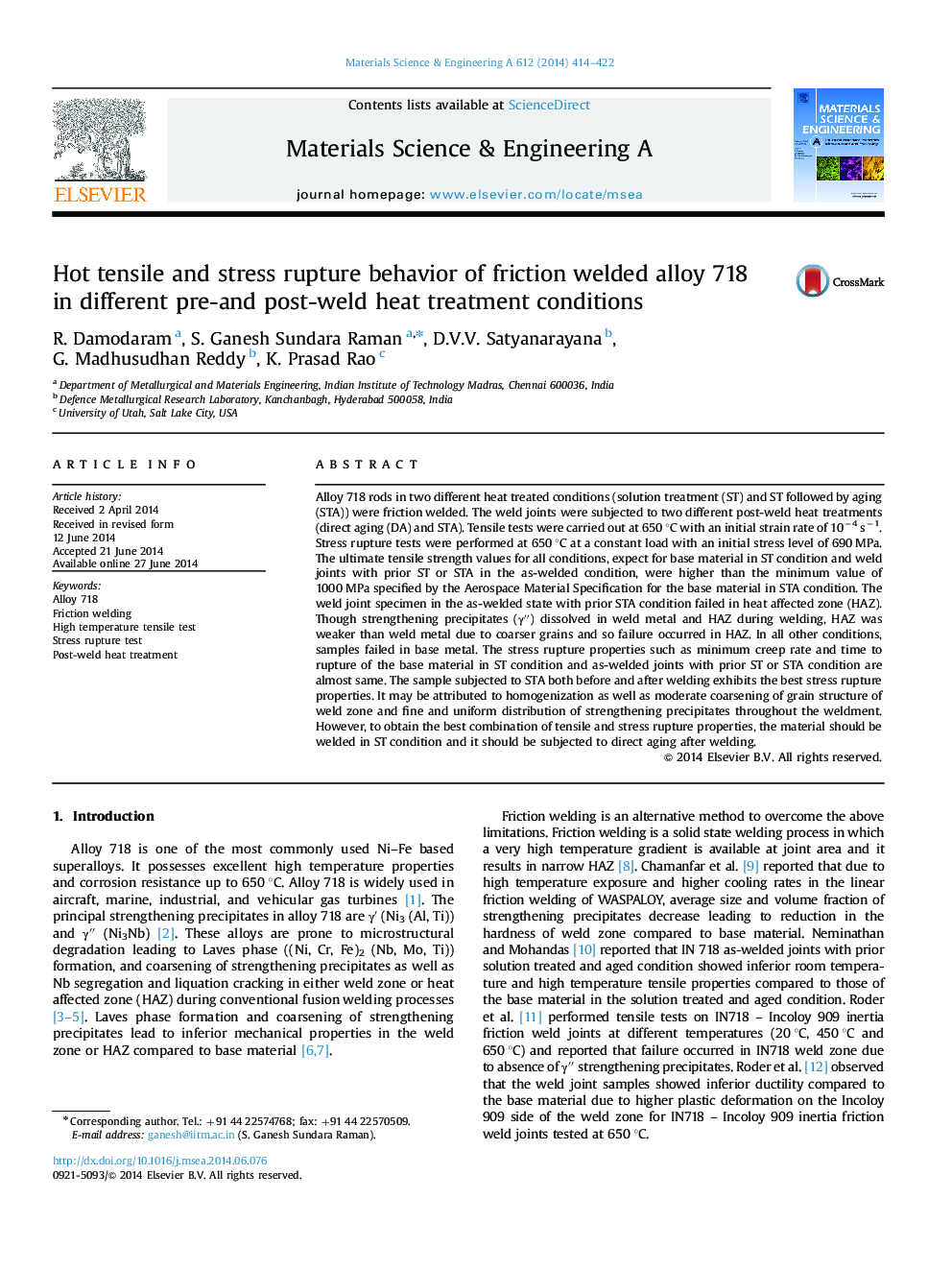| Article ID | Journal | Published Year | Pages | File Type |
|---|---|---|---|---|
| 7980910 | Materials Science and Engineering: A | 2014 | 9 Pages |
Abstract
Alloy 718 rods in two different heat treated conditions (solution treatment (ST) and ST followed by aging (STA)) were friction welded. The weld joints were subjected to two different post-weld heat treatments (direct aging (DA) and STA). Tensile tests were carried out at 650 °C with an initial strain rate of 10â4 sâ1. Stress rupture tests were performed at 650 °C at a constant load with an initial stress level of 690 MPa. The ultimate tensile strength values for all conditions, expect for base material in ST condition and weld joints with prior ST or STA in the as-welded condition, were higher than the minimum value of 1000 MPa specified by the Aerospace Material Specification for the base material in STA condition. The weld joint specimen in the as-welded state with prior STA condition failed in heat affected zone (HAZ). Though strengthening precipitates (γâ²â²) dissolved in weld metal and HAZ during welding, HAZ was weaker than weld metal due to coarser grains and so failure occurred in HAZ. In all other conditions, samples failed in base metal. The stress rupture properties such as minimum creep rate and time to rupture of the base material in ST condition and as-welded joints with prior ST or STA condition are almost same. The sample subjected to STA both before and after welding exhibits the best stress rupture properties. It may be attributed to homogenization as well as moderate coarsening of grain structure of weld zone and fine and uniform distribution of strengthening precipitates throughout the weldment. However, to obtain the best combination of tensile and stress rupture properties, the material should be welded in ST condition and it should be subjected to direct aging after welding.
Keywords
Related Topics
Physical Sciences and Engineering
Materials Science
Materials Science (General)
Authors
R. Damodaram, S. Ganesh Sundara Raman, D.V.V. Satyanarayana, G. Madhusudhan Reddy, K. Prasad Rao,
